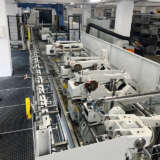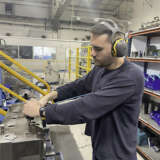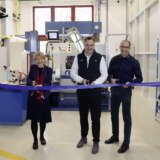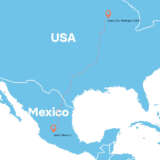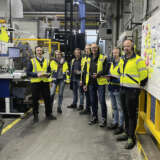Production on tour
Rose City, Michigan (USA) and León (Mexico) are separated by 3,600 kilometers. People are able to cover this distance relatively easily by plane, but when it comes to moving an entire production operation, it is a project that requires meticulous planning. And that is precisely what our colleagues at KAMAX and Robert Schröder are doing on site right now. But why?
Spindles
Robert Schröder produces the spindles shown here in Europe and North America. They can be found in applications such as vehicle seat components, rear lids, side doors and height-adjustable tables. With the help of our spindles, rotary movements of the shaft are converted into linear motion.
KAMAX’s Robert Schröder unit has been working as part of a joint venture with EJOT-ATF in Rose City, Michigan (USA), about a two-hour car journey from Lapeer, Michigan, to produce spindles for power liftgates. Some of their better-known customers include Bosch, Edscha, and Brose. Even though the location is going to be closed down, it is essential that the technical expertise and production capacity remain available for the American market. That is why production is now being transferred to León. A joint team comprising the Robert Schröder, KAMAX Lapeer, and KAMAX Léon units is working together closely to realize this technology transfer. There are a number of important requirements that must be satisfied to do this:
As the saying goes, time is money, and that is naturally true for this project as well. To get things accomplished more quickly, the team decided to order an additional two new machines for the León location that will be delivered at the end of June. Thanks to this step, our colleagues on site will be able to help build up the necessary safety stock. That is the key to the whole operation and a fundamental requirement for being able to get the actual move underway.
Lessons and outlook
According to David Winn, Vice President of Engineering in Lapeer: “That is definitely a lesson that we have learned: it simply takes too long to build up sufficient safety stock in the course of normal ongoing operations.” André Casel, Managing Director of Robert Schröder, adds that: “We had high levels of customer call-offs that really threw off our schedule.” Even now, with the additional capacities in place, all of our colleagues are having to work all out. The project is scheduled for completion in the third quarter of 2024. This means that, from the start of planning until the completion of the project, a total of roughly twelve months will have passed.
Was all this effort worth it? Everyone involved is certain that the answer is “Yes.” After all, this has made it possible to take the expertise that had been present in a joint venture and import it into the KAMAX Group itself. And there are already new customers making inquiries, since moves to transfer spindle production out of China are something that KAMAX can benefit from. After all, one of KAMAX North America’s strategic objectives is to expand its expertise in the field of precision machine parts – and spindle production is a good place to start.
KXpress





